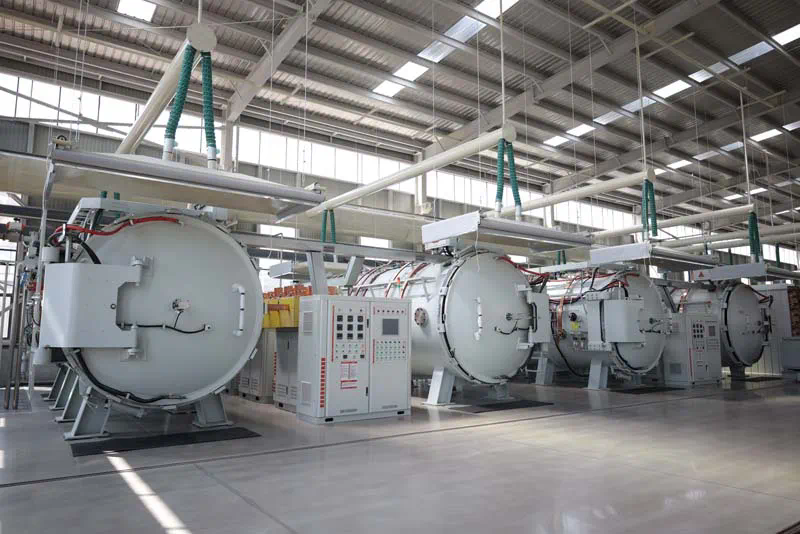Thermal Conductivity of Silicon Carbide- A Key Factor in Electronics
Silicon carbide (SiC) has become a pivotal material in modern electronics, particularly due to its remarkable thermal conductivity. This property is essential for the performance and reliability of electronic devices, especially in high-power and high-temperature applications. Understanding the thermal conductivity of silicon carbide, along with its implications for electronics, involves a detailed exploration of its physical properties, its role in electronic components, and the advantages it offers compared to other materials.
Thermal conductivity is a measure of a material’s ability to conduct heat. For electronic components, efficient heat dissipation is crucial to prevent overheating, which can lead to reduced performance, shortened lifespan, or even failure of the device. Silicon carbide, with its high thermal conductivity, addresses these concerns effectively.
Silicon carbide’s thermal conductivity is significantly higher than that of traditional semiconductors like silicon. This makes SiC a preferred material for power electronics, where high temperatures and high power densities are common. The superior thermal conductivity of SiC not only enhances the performance of electronic devices but also contributes to their energy efficiency and longevity.
Thermal Conductivity of Silicon Carbide
The thermal conductivity of silicon carbide is influenced by its crystal structure, which is typically hexagonal. SiC can be found in various polytypes, each with slightly different thermal conductivity properties. The most common polytypes include 4H-SiC and 6H-SiC, both of which exhibit high thermal conductivity. Generally, SiC’s thermal conductivity ranges from 120 to 270 W/m·K, depending on the specific polytype and the quality of the material.
This high thermal conductivity is attributed to the strong covalent bonds between silicon and carbon atoms in the SiC crystal lattice. These bonds facilitate efficient heat transfer through the material. The phonon transport mechanism, which involves the movement of lattice vibrations (phonons) through the crystal, plays a significant role in this high thermal conductivity. In SiC, the strong bonds and rigid lattice structure minimize phonon scattering, allowing heat to be conducted more effectively.

Comparison with Other Materials
When comparing silicon carbide to other materials used in electronics, such as silicon (Si) and gallium nitride (GaN), its advantages become evident. Silicon, while widely used in electronics, has a much lower thermal conductivity of about 150 W/m·K. GaN, another material used in high-power applications, has a thermal conductivity of around 130 W/m·K. Although GaN also performs well in high-temperature environments, SiC’s higher thermal conductivity provides superior heat dissipation.
Applications in Electronics
Silicon carbide’s thermal conductivity makes it an ideal material for various electronic applications, including power devices, high-frequency devices, and high-temperature devices. In power electronics, SiC is used in components such as MOSFETs (metal-oxide-semiconductor field-effect transistors) and Schottky diodes. These components benefit from SiC’s ability to handle high voltages and currents while maintaining stable operation at elevated temperatures.
In high-frequency applications, SiC is used in radio frequency (RF) and microwave devices. The high thermal conductivity helps to manage the heat generated during high-frequency operation, ensuring reliable performance. Additionally, SiC’s thermal properties make it suitable for high-temperature environments, such as those found in automotive and aerospace applications.
Manufacturing and Challenges
The production of silicon carbide involves several challenges, particularly in achieving high-quality material with consistent properties. The growth of SiC crystals is typically done using methods such as sublimation or chemical vapor deposition (CVD). Both methods have their advantages and limitations. Sublimation is a high-temperature process that produces high-purity SiC but can be slow and costly. CVD, on the other hand, allows for more precise control over the material’s properties but requires sophisticated equipment.
One of the challenges in SiC manufacturing is maintaining uniform thermal conductivity across the material. Variations in the crystal structure or the presence of defects can affect thermal conductivity. Advances in manufacturing techniques and quality control are essential for optimizing the performance of SiC-based devices.
Future Developments
The ongoing research in silicon carbide technology focuses on enhancing its thermal conductivity and overall performance. Innovations in material processing, crystal growth, and doping techniques are expected to further improve SiC’s properties. Additionally, researchers are exploring new SiC polytypes and composites that could offer even higher thermal conductivity or other beneficial properties.
The development of SiC-based devices is also driven by the demand for more energy-efficient and high-performance electronics. As technology continues to advance, silicon carbide is likely to play an increasingly important role in next-generation electronic systems. Its superior thermal conductivity positions it as a key material in the evolution of power electronics, high-frequency devices, and high-temperature applications.
Conclusion
The thermal conductivity of silicon carbide is a crucial factor in its performance as an electronic material. Its ability to efficiently conduct heat makes it highly desirable for power electronics, high-frequency devices, and high-temperature applications. Compared to traditional silicon carbide grit semiconductors, SiC offers significant advantages in terms of thermal management and reliability.
As research and development continue to advance, the potential of silicon carbide in electronics will only grow. Its high thermal conductivity, combined with its other beneficial properties, ensures that it will remain a key material in the development of cutting-edge electronic devices and systems. Understanding and leveraging the thermal properties of silicon carbide will be essential for engineers and scientists as they design and optimize the next generation of electronic technologies.
https://supplychaininterview.com/